strong man; beautiful woman
Exploring Gender Differences in Literature

Recent headlines mention sexism in the workplace, at home, and even the world at large, but does sexism also exist in works of art, such as literature and film? And how do we test for it?
The answer is the Bechdel Test, which was introduced in a 1985 comic by Alison Bechdel. This test asks three questions about a piece of media: Are there two named female characters; do they speak to each other; and do they discuss something other than a man? If the answer to one of these questions is no, the work does not “fairly represent” women. Fortunately, things seem to be looking up for women on the silver screen, but what about women in literature?
To better understand gender differences in the literary world, we did a couple of things. First, we analyzed nearly 200 bestselling fiction books. Then, we examined the Corpus of Historical American English (COHA). We asked: How do these works describe men and women? Which books written by male authors pass the Bechdel Test? Keep reading to see what we learned.
Is There Gender Bias in Bestselling Fiction?
For the purpose of these analyses, we put together an exhaustive list of fiction titles that achieved a high volume of sales.
The Harry Potter series, The Girl on the Train, The Da Vinci Code, Things Fall Apart, and Charlotte’s Web all made our list of nearly 200 popular fiction books.
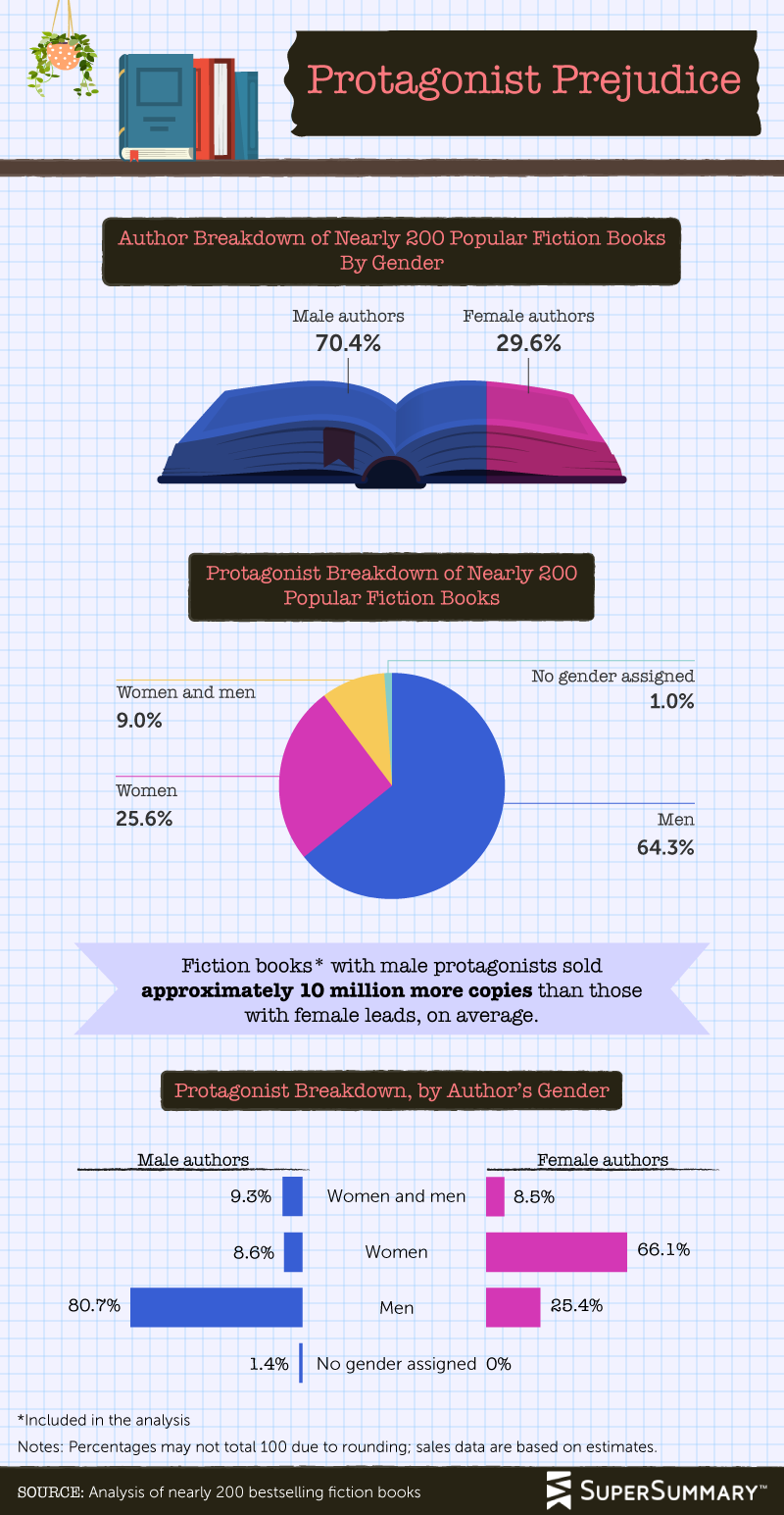
Over two-thirds of bestselling authors examined were men, and 64.3% of protagonists were also male. Moreover, books with male protagonists sold approximately 10 million copies more than novels with female protagonists. In fact, books with male protagonists sold an average of 10 million more copies than those featuring female leads.
We also learned female authors were more likely to include lead female characters, while men were more likely to tell men’s stories. None of the female authors examined and less than 2% of bestselling fiction books written by men had gender-neutral protagonists.
Bias Revealed by the Bechdel Test
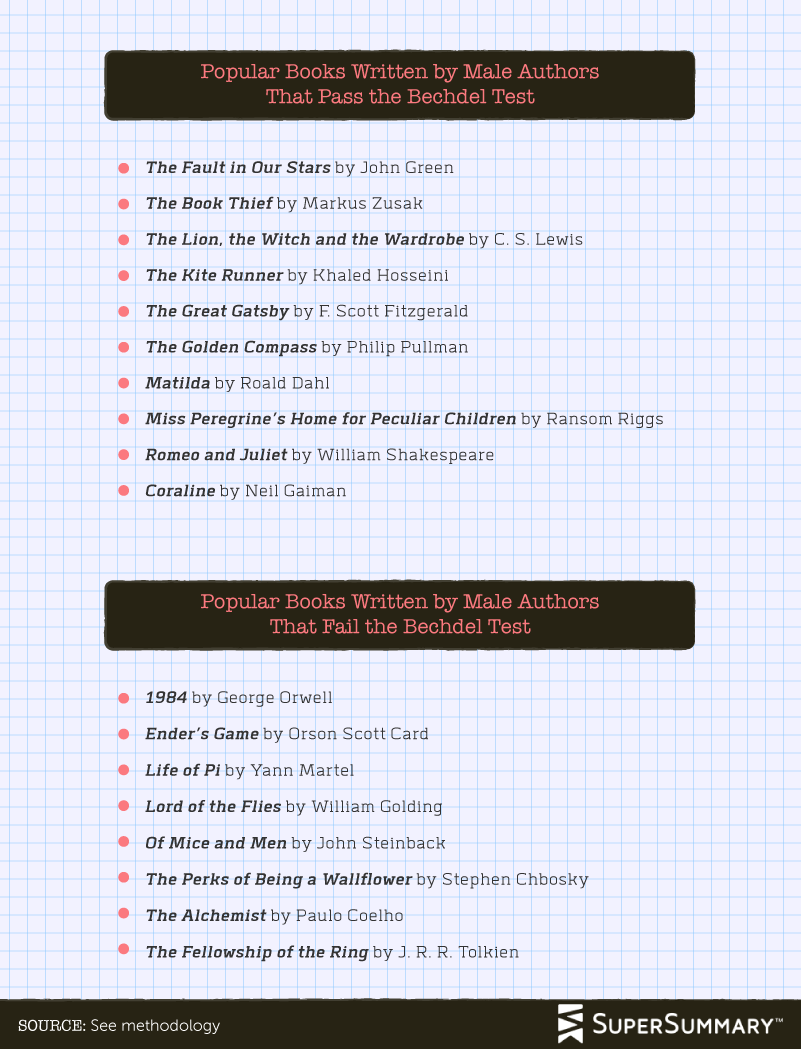
As we mentioned earlier, the Bechdel Test should be easy to pass: If two named female characters talk to each other about something other than a man, the book passes the test. Popular books that have passed this test include The Fault in Our Stars by John Green, The Book Thief by Markus Zusak, and even Romeo and Juliet.
Unfortunately, some bestselling fiction books failed the Bechdel Test. The Perks of Being a Wallflower by Stephen Chbosky, The Alchemist by Paulo Coelho, and Ender’s Game by Orson Scott Card lacked text where two named female characters discussed something other than a man.
Representation Matters
We live in a diverse society, so representation matters. Otherwise, we risk expressing only one point of view. Our study found that when women authored books, they included more female (66%) than male protagonists (25%), which means more women are telling stories from a perspective they know.
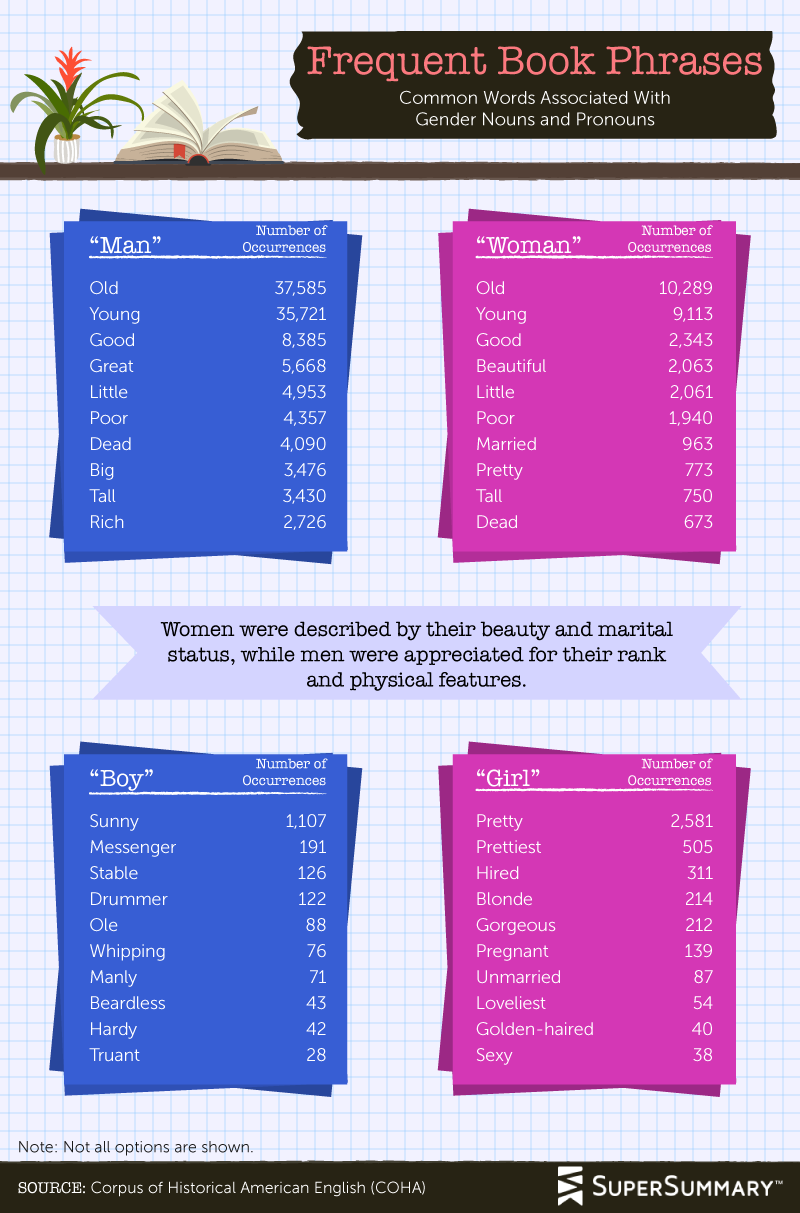
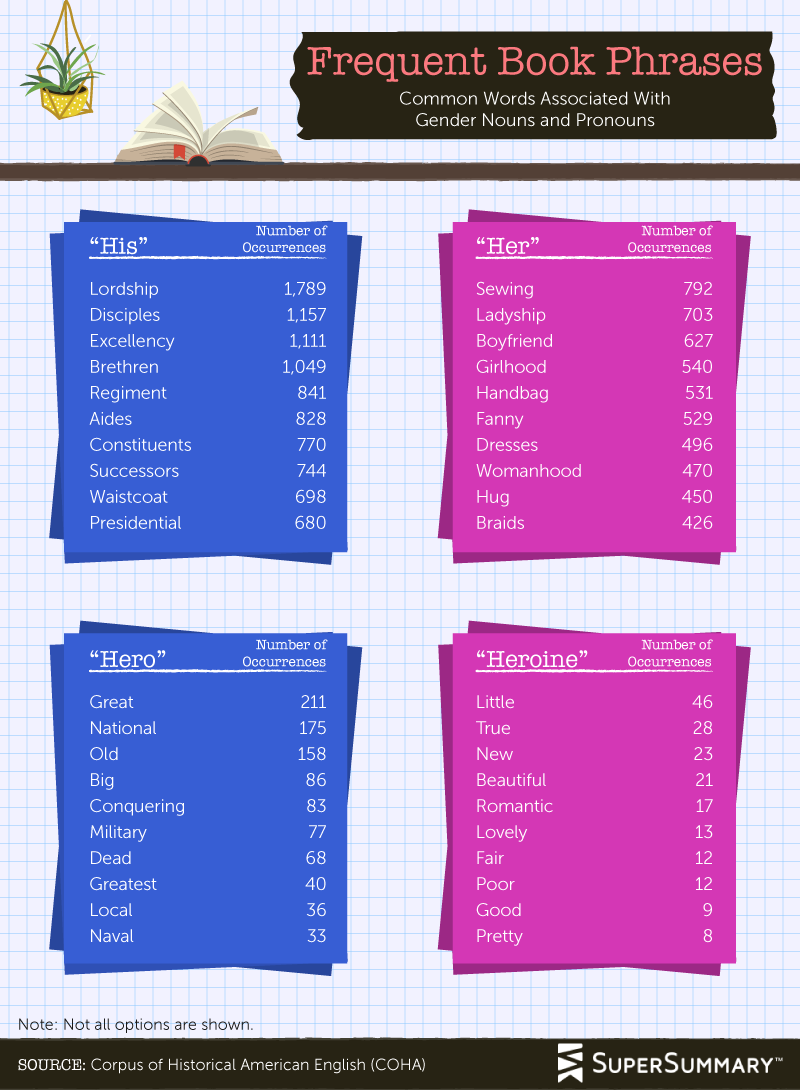
Temporarily moving away from the Bechdel Test, we examined nearly 200 fiction books from the Corpus of Historical American English. The COHA is a large database of historical English, containing more than 400 million words of text from the 1800s to 2000s. This exhaustive tool enables comparisons, such as the adjectives applied to female versus male characters across decades of literature.
We discovered instances of gender bias. There were a few particularly telling results:
- The pronoun “his” was more likely to be paired with nouns that denoted status and power: “Lordship” was the most common, appearing 1,789 times, followed by “disciples” and “excellency.”
- The pronoun “her” was most likely to be paired with domestic duty nouns, such as sewing (792 appearances), while “ladyship” and “boyfriend” trailed behind.
- The male “hero” was most often described as “great,” “national,” and even “old,” while the “heroine” was “little,” “new,” or “beautiful.”
Next, we looked at the words used to differentiate genders. Whether we were comparing a man and woman, girl and boy, or heroine and hero, a clear result came up again and again: Women were described according to their beauty and marital status, while men were appreciated for their rank and physical features.
The Rich, Honest, Strong Man and the Beautiful Woman
Presently, the publishing industry is skewed heavily female, which has helped women gain more opportunities to share their stories than they could in the 19th century.
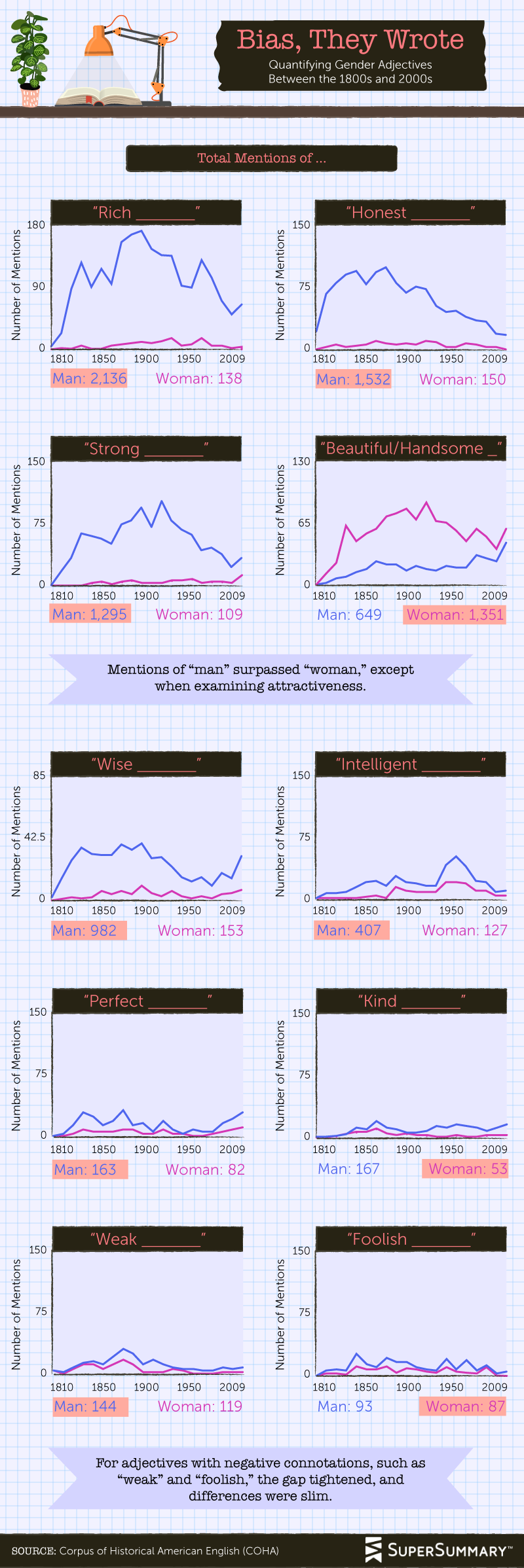
In the COHA portions that we examined, mentions of “man” surpassed “woman,” on all accounts except when attractiveness was examined. Words such as “beautiful” and “handsome” were more often used to refer to women, whereas all other positive adjectives we looked at — rich, honest, strong, perfect, and kind — more frequently referred to male characters.
That said, negative adjectives were associated more often with male characters as well. We noticed that “weak” and “foolish” were also more frequently associated with male characters than with females.
Future of Fiction
Ultimately our analysis echoes many sentiments fueling feminism today. Male leads have ruled fiction for much of history. Women’s representation has been minimal, and often sexist and superficial. That said, women are now writing and publishing more, so there is certainly hope for further progress toward gender equity in literature .
Want to conduct your own gender study of the books you love? SuperSummary makes it easy to review thousands of titles across multiple literary genres. We supply detailed summaries of hundreds of books, including short stories and plays. If you visit us online, you’ll also find that we include in-depth study guides that cover character analysis and explain themes—such as oppression, empowerment, gender roles, feminism, the hero’s journey—, and more.
Methodology and Limitations
For this analysis, we compiled an exhaustive list of popular fiction books from 1300 to 2015. From here, our team conducted an in-depth character analysis of each title to accurately determine the gender of each protagonist.
We tapped the Corpus of Historical American English (COHA) to find words, primarily adjectives, most commonly associated with various gender nouns and pronouns from 1810 to 2009. Additionally, we used mini line graphs to effectively showcase the disparity in adjectives preceding or following “man” and “woman” over time. For the final visual, we illustrated protagonists from some of the most popular books in their respective eras.
The main limitation of this study is that the majority of the data solely relies on the information collated in the COHA. The COHA contains over 400 million words of text from the 1810s to 2000s. Moreover, it’s important to note that in the first visual, we didn’t examine the top 100 bestselling books but rather nearly 200 popular fiction books throughout the past two centuries.
Fair Use Statement
The best works of literature deserve to be shared, and the same is true for our study. However, the graphics and content are reserved for noncommercial use. Freely share with other book lovers; all we ask is that you cite the authors and link back to this page when doing so.